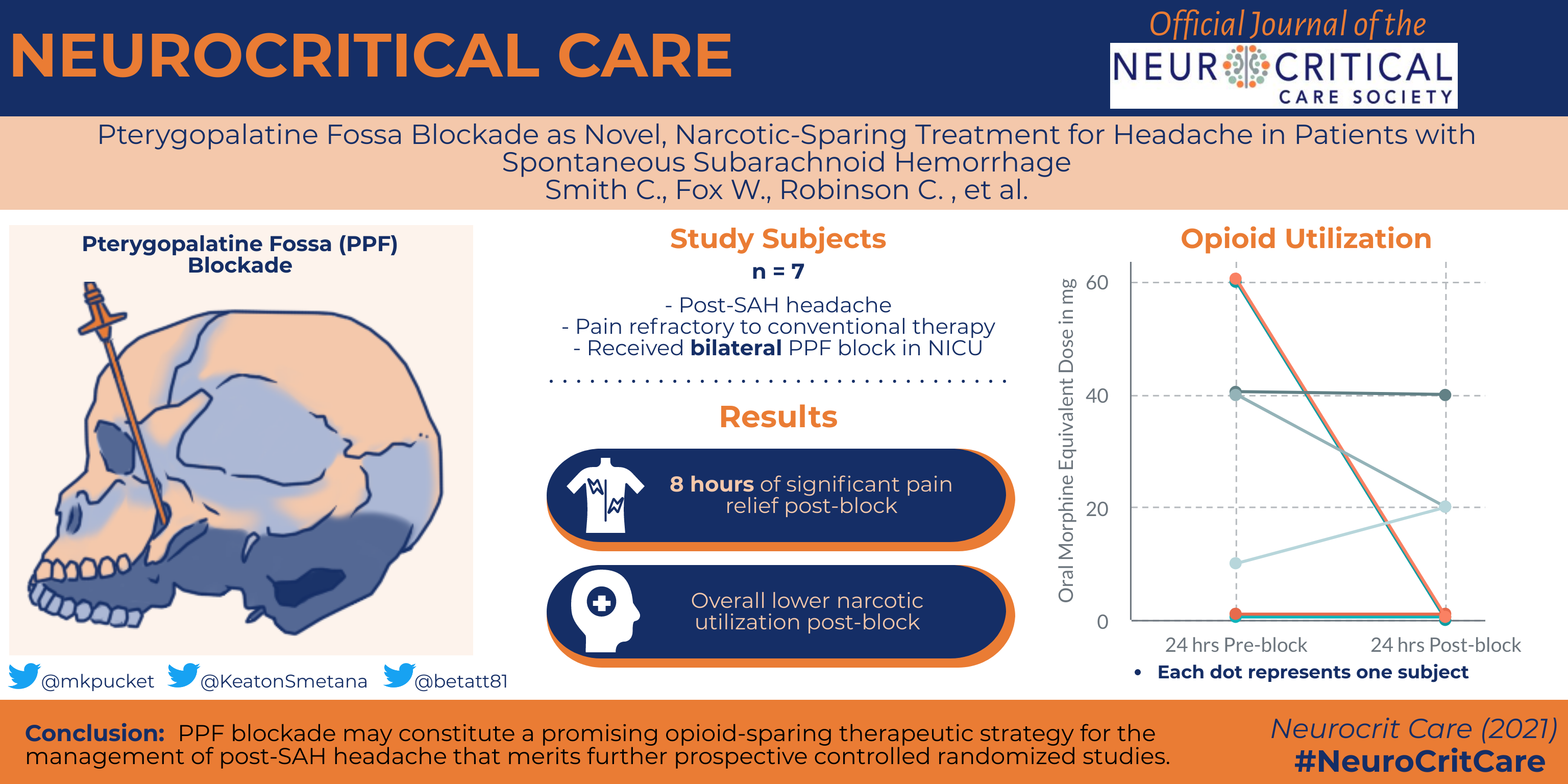By: Cameron R. Smith, W. Christopher Fox, Christopher P. Robinson, Cynthia Garvan, Marc-Alain Babi, Michael A. Pizzi, Erica Lobmeyer, Alberto Bursian, Carolina B. Maciel & Katharina M. Busl
Published: 05 January 2021
Background

Severe headache is a hallmark clinical feature of spontaneous subarachnoid hemorrhage (SAH), affecting nearly 90% of patients during index hospitalization, regardless of the SAH severity or presence of a culprit aneurysm. Up to 1 in 4 survivors of SAH experience chronic headaches, which may be severe and last for years. Data guiding the optimal management of post-SAH headache are lacking. Opioids, often in escalating doses, remain the guideline-recommended mainstay of acute therapy, but pain relief remains suboptimal.
Methods
This study is a case series of adult patients who received bilateral pterygopalatine fossa (PPF) blockade for the management of refractory headaches after spontaneous SAH (aneurysmal and non-aneurysmal) at a single tertiary care center. We examined pain scores and analgesic requirements before and after block placement.
Read the full article.